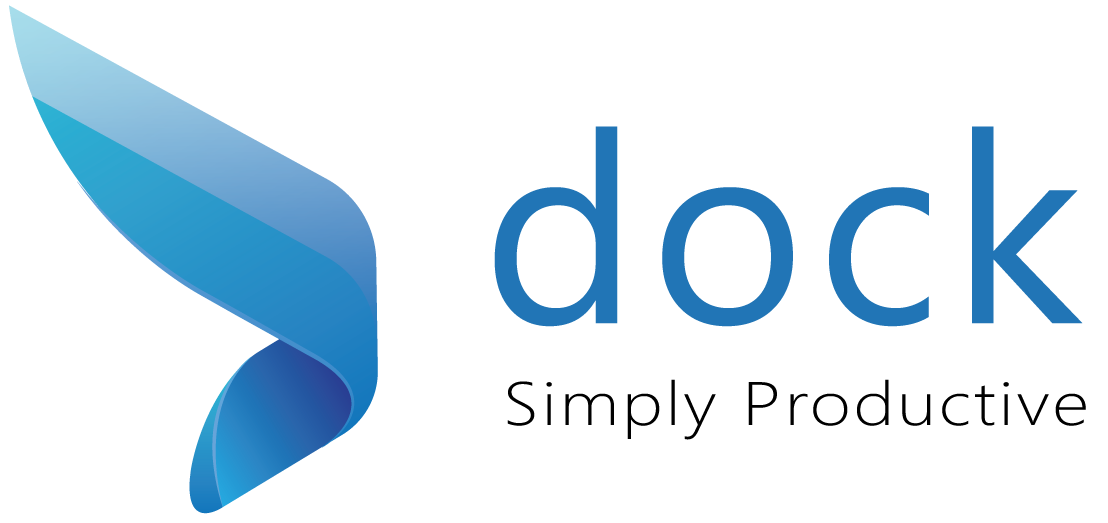
A Guide To Document Management In Salesforce
Content
- What is Salesforce?
- What is Salesforce Document Management?
- Importance of Document Management in Salesforce
- How does Salesforce Document Management work?
- Document storage and organization
- Salesforce CRM Content
- Searchability
- Collaboration & Version Control
- What are the limitations of Salesforce Document Management?
- Alternative Solution — Dock 365
Documents and data are essential to every business process. Even though it is vital, document management often seems like an organization's least priority. Most often, they store them across multiple platforms in different formats. As a result, teams are drowning in a sea of papers, struggling to keep track of relevant documents, and spending hours searching for that one file they need.
That is why organizations of all sizes require a systematic approach to organizing, storing, and retrieving documents. Sales, legal, marketing, and finance employees can easily access relevant information, saving time and increasing productivity.
What is Salesforce?
Salesforce is a cloud-based customer relationship management (CRM) platform that helps businesses manage their sales, marketing, customer service, and more.
It enables businesses to manage their sales processes and track leads, opportunities, and customer interactions. The sales teams have a 360-degree view of their customers, forecast sales, and collaborate effectively within a single place. The platform can also automate marketing, customer service, and commerce. Thus, businesses can make data-driven decisions and track key performance indicators at all levels.
What is Salesforce Document Management?
Salesforce document management involves storing, organizing, and sharing various documents and files within the CRM platform. Typically, it involves files and information that the finance, sales, marketing, and procurement teams would find beneficial.
Departments across the organization depend on Salesforce to carry out their daily functions. Therefore, storing relevant documents such as contracts, proposals, presentations, and product information directly within CRM makes them easily accessible and convenient for users. While Salesforce isn’t primarily a document management system, it does offer several features to streamline the process. However, before we get into that, let’s see who benefits from document management in Salesforce.
Importance of Document Management in Salesforce
Sales team
Sales teams are often on the front lines of customer interactions, and having quick access to relevant documents can make all the difference in closing deals. With document management in Salesforce, sales reps can easily access sales contracts, product brochures, and other essential documents within the CRM platform. This streamlined process saves time and ensures that the sales team has the most up-to-date information at their fingertips.
Marketing team
For marketing teams, having a centralized repository for all marketing collateral is essential. Document management in Salesforce allows marketing teams to store and organize assets. It guarantees users have access to the same set of authorized documents, resulting in consistent information across all platforms.
Customer support
Customer support teams deal with a high volume of inquiries daily, and having quick access to relevant documentation is vital to providing top-notch service. Salesforce document management enables agents to access relevant data to resolve issues. It helps to improve customer satisfaction and reduce response times.
Legal team
Legal counsel must ensure that the organization functions within legal, organizational, and industrial standards. Accessing documents within CRM helps these teams securely store and manage sensitive documents such as contracts, NDAs, and compliance policies.
How does Salesforce Document Management work?
Employees need to access the company's documentation and knowledge base easily and quickly to do their jobs well. If they’re all over the place without a proper system, no one can reach them in time or ensure their integrity. That’s why document management within CRM, a platform where businesses carry out most functions, is critical. Here’s how Salesforce supports document management:
Document Storage and Organization
The primary responsibility of document management is the safe storage and arrangement of files. Salesforce offers Files Home, a central location to store files on the CRM platform. Users can view files that are shared with them, share files with others, and access all the files they have privately stored. They can also download files, create public links, or upload new versions.
Salesforce document management supports all file types, including PowerPoint presentations, Excel spreadsheets, PDFs, and image files. Employees can upload and download audio and video files. Through Files Connect, users can browse, search, and share files within an external data source from Salesforce.
Salesforce CRM Content
It enables users to organize, share, search, and manage content within an organization and across Salesforce's key areas. The content includes all file types, from traditional business documents like PowerPoint presentations to audio and video files, Web pages, and Google Docs.
Salesforce CRM Content organizes files into fully searchable file repositories known as libraries. Owners can create multiple libraries based on any classification, such as department, designation, or team, and then set user permissions within each library to establish content access and security.
Searchability
Files Home allows users to search for their files and those they can access. They can search and filter based on file name, description, owner, type, and content. Any Salesforce document can be private, privately shared, or visible to the entire company. This file permission prevents data breaches and unauthorized access.
The Salesforce CRM Content search engine scans the entire body of the document and content properties like the title, description, tags, categorization data, and author name. It supports filtering searches by content, file format, author, tags, libraries, and custom fields. Users can subscribe to authors, tags, and libraries to receive timely notifications whenever a file change occurs.
Collaboration & Version Control
Efficient document collaboration within organizations and with external users is critical for completing tasks and maintaining a single source of truth. Salesforce offers diverse tools to collaborate on tasks, decision-making, and documents. Organizations can use Chatter to communicate with colleagues via feeds, profiles, groups, and more to share information, collaborate, and stay informed on the latest updates.
Salesforce document management also includes Version History, which shows all of the versions of a file, including the current one. Thus, users can track who updated it, when, and the resulting changes. They can also follow a file for real-time updates in the Chatter feed, including when a new version is uploaded.
What are the limitations of Salesforce Document Management?
Salesforce is an effective platform for customer relationship management. And it does support document management needs to some extent. However, when it comes to advanced functions, Salesforce has its limitations.
1. File size limitations
Salesforce limits the size of files that can be uploaded, which can be inconvenient when dealing with large documents or media files. It can be frustrating for users who need to upload and share large files within the platform. Salesforce couldn’t keep up with the high documentation demands of scaling organizations.
2. Limited storage space
Another limitation of document management in Salesforce is the limited storage space available. It provides a certain amount of storage space based on your subscription plan, and additional storage can be costly. Organizations with large amounts of documents and files to manage may quickly reach their storage limits.
3. Lack of advanced features
While Salesforce does offer basic document management features such as file uploading, sharing, and versioning, it lacks more advanced document management capabilities. Salesforce, for example, does not include built-in document editing or advanced search functionality. Users may need help organizing and locating documents on the platform.
Alternative Solution — Dock 365
The sheer volume of contracts, agreements, and other critical documents that organizations deal with daily means they need a reliable system to manage and track them. While Salesforce supports storage and organization, businesses still must depend on external systems for generation and editing. It means the files exist across diverse platforms throughout the business process.
Enterprises already depending on Salesforce for CRM can upgrade it to manage documents through intelligent integration. Dock 365, an all-in-one contract management platform, offers advanced tools to streamline the entire contract lifecycle, from creation and negotiation to execution and renewal.
It offers a centralized repository for all contracts, enabling easy access and tracking of crucial paperwork. It automates repetitive tasks such as contract routing and approval, saving time and reducing errors. Moreover, integration with Salesforce creates a single source of information for all the essential business data.
Users can create contracts directly from their CRM portal without switching to the Dock 365 application. This integration enhances the ease of document access and the overall productivity of the entire organization.
Built on Microsoft 365, the CMS platforms ensure compliance with legal and regulatory requirements. The real-time access to documents facilitates data-driven analytics, risk assessment, and reporting. Administrators can even set up user permissions for documents, parties, and workflows. They can set role-based access for owners, reviewers, and editors.
In conclusion, by integrating Salesforce with Dock 365, businesses can have all their documents and data in one place. It eliminates the need to switch between multiple systems for document generation, storage, and organization.
Book a Live demo
Schedule a live demo of Dock 365's Contract Management Software instantly.
.png?width=196&height=196&name=MicrosoftTeams-image%20(24).png)
Written by Deepti Gopimohan



